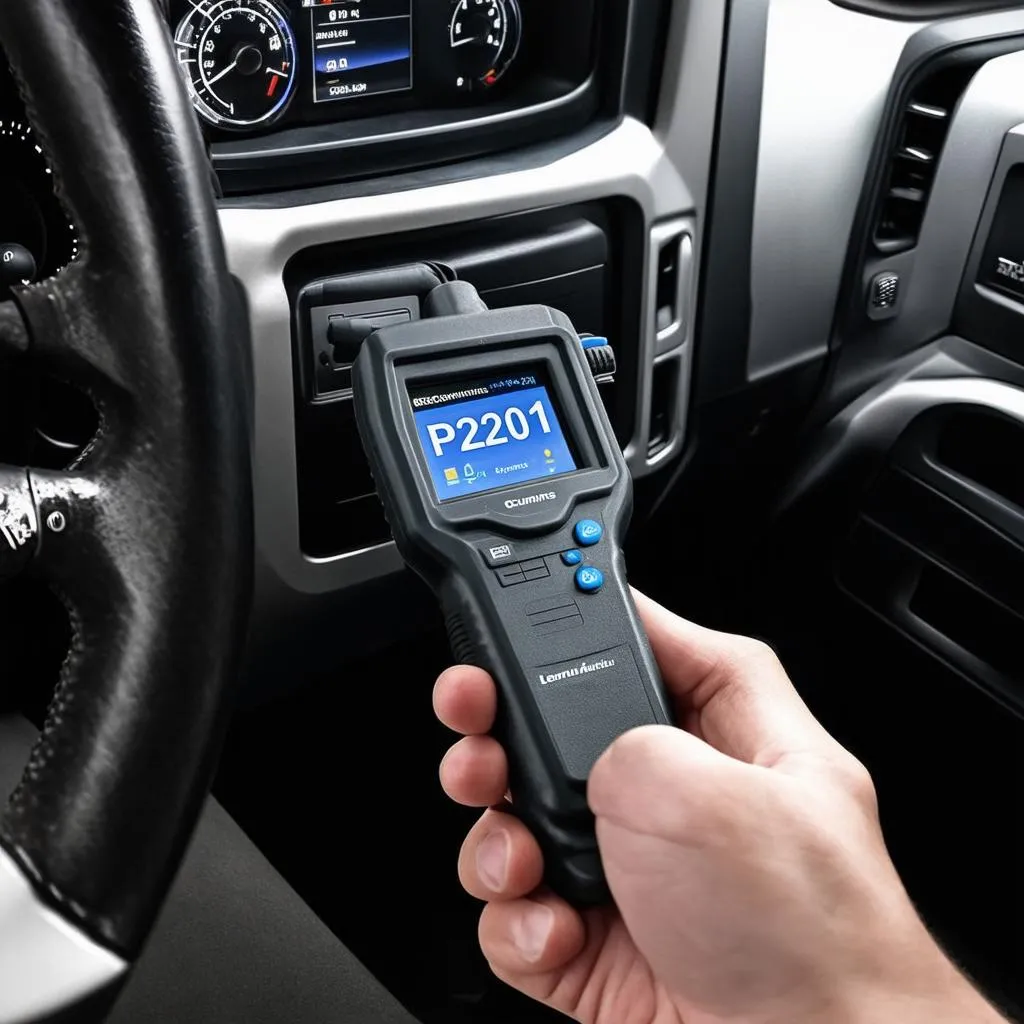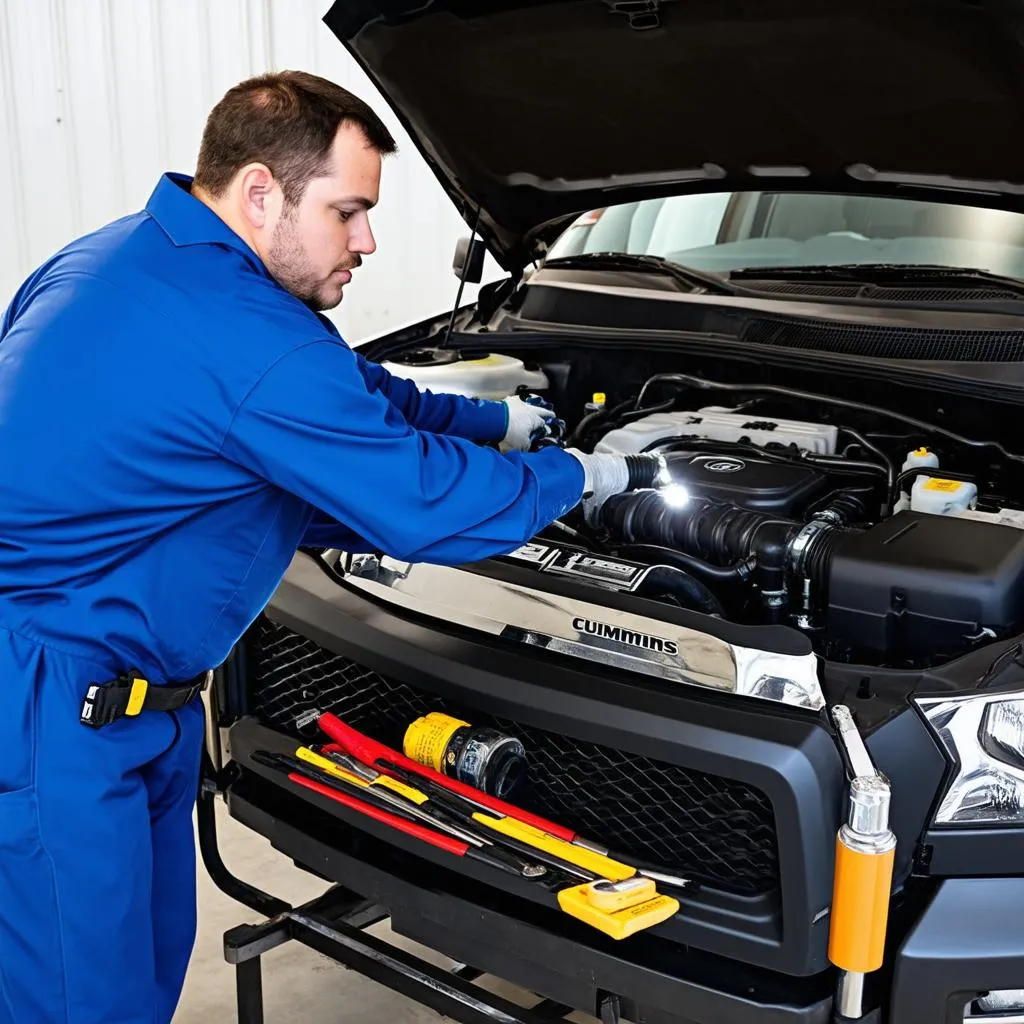“A smooth sea never made a skilled sailor,” or so the old saying goes. And when it comes to owning a powerful workhorse like the 2014 Ram 2500 Cummins, a few bumps in the road are almost inevitable. One such bump often comes in the form of a perplexing “check engine” light accompanied by the dreaded P2201 OBD-II code. But before you start panicking, let’s break down this code and see what it really means for you and your trusty truck.
The P2201 Code: What’s It Trying to Tell You?
Imagine your Ram 2500 is like a well-oiled machine (because it practically is!), and each part has a specific job to do. The P2201 code specifically points to a potential problem with the NOx (Nitrogen Oxide) sensor circuit in Bank 1, Sensor 1.
Now, hold on! Don’t let the technical jargon scare you. Think of the NOx sensor like the environmental watchdog of your engine. It measures the amount of harmful NOx emissions being released, making sure your truck stays on the right side of Mother Nature.
But here’s the catch: this code doesn’t always signify a faulty sensor itself. It could be a range of issues, from loose wiring to a faulty sensor heater. Just like a miscommunication can cause chaos in a family, a slight disruption in the sensor circuit can trigger this code.
Common Culprits Behind the P2201 Code
Just like a detective investigates a crime scene, we need to consider all possible suspects when dealing with this error code. Some of the usual suspects include:
- Faulty NOx Sensor: This is the most straightforward explanation. Over time, sensors can wear out or become contaminated, sending inaccurate readings to your truck’s computer.
- Wiring Issues: Exposed or damaged wiring in the NOx sensor circuit can disrupt the flow of information, leading to a false alarm.
- Exhaust Leaks: Remember, your exhaust system plays a vital role in controlling emissions. Leaks can throw off the NOx sensor readings, triggering the P2201 code.
- Faulty Diesel Exhaust Fluid (DEF) System: DEF helps reduce NOx emissions. If there’s an issue with your DEF system, like low fluid levels or a faulty injector, it can indirectly cause the P2201 code.
Troubleshooting the P2201: Getting to the Root of the Problem
It’s crucial to diagnose the root cause before throwing parts at the problem. Here’s a systematic approach:
- Visual Inspection: Start by visually inspecting the NOx sensor and its wiring for any obvious damage, loose connections, or corrosion.
- Diagnostic Scan Tool: A good OBD-II scanner can provide more specific data about the error code, pinpointing the issue.
- Sensor Testing: Using a multimeter, you can test the NOx sensor’s resistance and voltage to ensure it’s within the manufacturer’s specifications.
- Exhaust System Inspection: Check for any leaks or damage to the exhaust system, particularly around the NOx sensor location.
Beyond the Technical: Finding Balance and Harmony
While troubleshooting mechanical issues is important, some believe that maintaining a harmonious balance within your vehicle is equally crucial. Just as Feng Shui emphasizes the importance of energy flow in your living space, some believe that maintaining a positive energy flow within your truck can contribute to its overall well-being. Keeping your truck clean, organized, and well-maintained can not only improve its performance but also create a more positive and enjoyable driving experience.
Seeking Expert Help
Diagnosing and fixing the P2201 code can be complex and may require specialized tools and knowledge. If you’re not comfortable tackling this yourself, don’t hesitate to seek help from a qualified mechanic specializing in diesel engines.
 OBD Scanner Connected to Truck
OBD Scanner Connected to Truck
FAQs About the P2201 Code
Q: Can I still drive my truck with the P2201 code?
While you might be able to drive for a short distance, ignoring the code can potentially lead to further damage and increased emissions.
Q: How much does it cost to fix the P2201 code?
The cost can vary widely depending on the root cause and labor costs in your area.
Q: Can I prevent the P2201 code from coming back?
Regular maintenance, including using high-quality DEF fluid and addressing exhaust leaks promptly, can help prevent this code from recurring.
 Mechanic Inspecting Engine Bay
Mechanic Inspecting Engine Bay
Need More Help? We’re Here for You!
Dealing with car troubles can be frustrating, but remember, you don’t have to navigate this alone. At techcarusa.com, we’re dedicated to providing you with the information and support you need to get back on the road. If you need further assistance with diagnosing or fixing the P2201 code on your 2500 Cummins, don’t hesitate to reach out to our expert team via WhatsApp at +84767531508. We’re available 24/7 to answer your questions and help you find the right solutions for your vehicle.
Explore Further
- [Troubleshooting Diesel Engine Problems] (link to relevant article on your website)
- [Understanding OBD-II Codes] (link to relevant article on your website)
We encourage you to share your experiences, questions, and insights in the comments section below. Let’s keep the conversation going and help each other keep our trucks running smoothly!